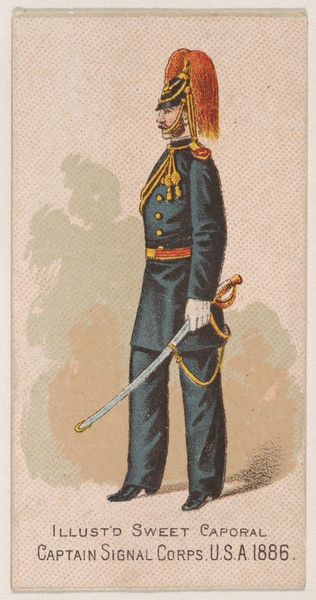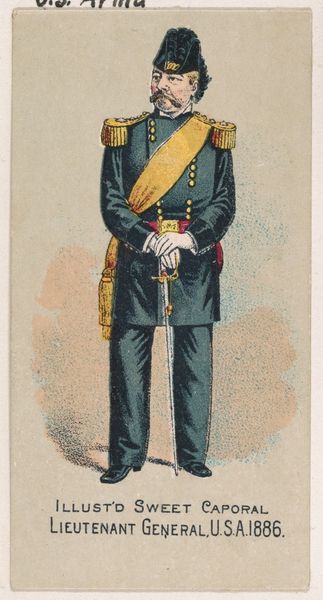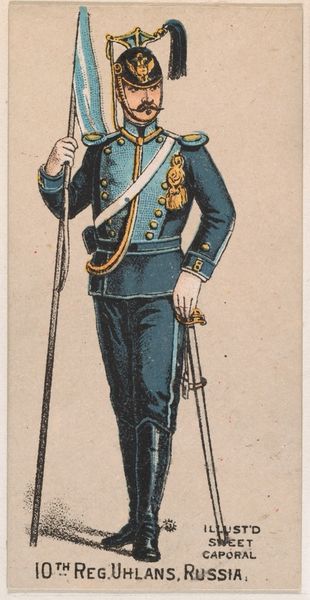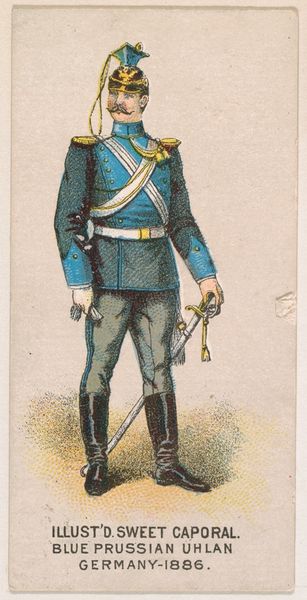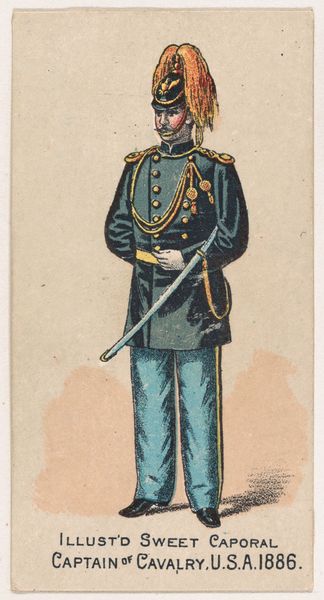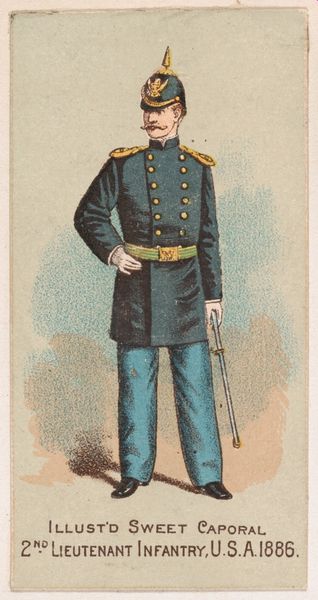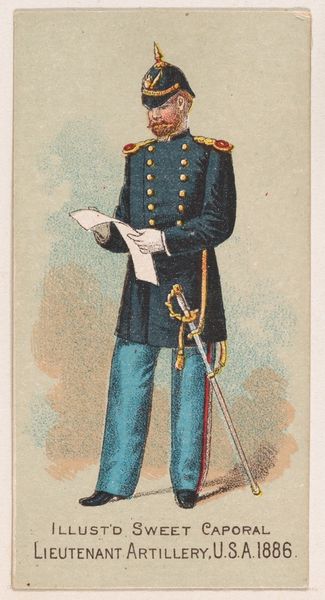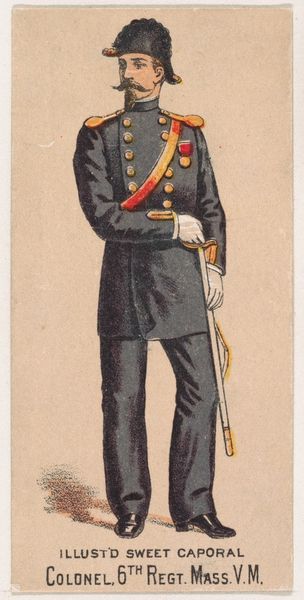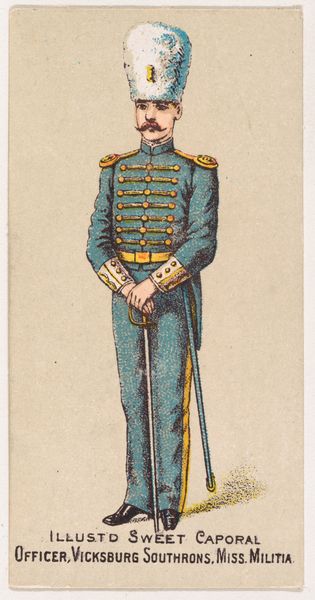
Captain, Light Artillery, United States Army, 1886, from the Military Series (N224) issued by Kinney Tobacco Company to promote Sweet Caporal Cigarettes 1888
0:00
0:00
drawing, print
#
portrait
#
drawing
# print
#
soldier
#
watercolour illustration
#
genre-painting
#
history-painting
#
academic-art
Dimensions: Sheet: 2 3/4 × 1 1/2 in. (7 × 3.8 cm)
Copyright: Public Domain
Editor: Here we have "Captain, Light Artillery, United States Army, 1886" from the Military Series, a print created by Kinney Tobacco Company in 1888. It's quite formal and posed. What can you tell me about it? Curator: This image, seemingly a simple portrait, opens a window into a complex socio-political landscape. These promotional cards, distributed with cigarettes, were hugely popular. They reflect an idealized, almost propagandistic view of the military. Who, at the time, was this imagery meant to appeal to and what were those cultural narratives being reinforced? Editor: It was aimed at consumers, right? Meant to sell cigarettes...But also to present a heroic image of the military? Curator: Precisely. And let's consider the period – 1888. Reconstruction was ending, and the nation grappled with issues of identity, citizenship, and the legacy of the Civil War. Military imagery became a tool to promote national unity. But what definition of 'nation' was actually being put forth, and who did it exclude? Whose interests does this portrait serve? Editor: So the image isn’t just about a captain, but about the whole social and political climate...the advertisement becomes part of history itself. I never would have thought of that! Curator: Exactly. These cards also circulated images and understandings of masculinity, race, and class, contributing to the cultural discourse of the time. Consider the captain's rigid pose, his immaculate uniform... What does it communicate about power and control? And whose gaze is prioritized here? Editor: It definitely shows how an image like this isn't just a picture, but an active participant in shaping beliefs. Thanks, I have so much to consider. Curator: Indeed. Hopefully this offers insight into how even seemingly innocuous images can hold layers of meaning reflecting social and historical power dynamics.
Comments
No comments
Be the first to comment and join the conversation on the ultimate creative platform.
